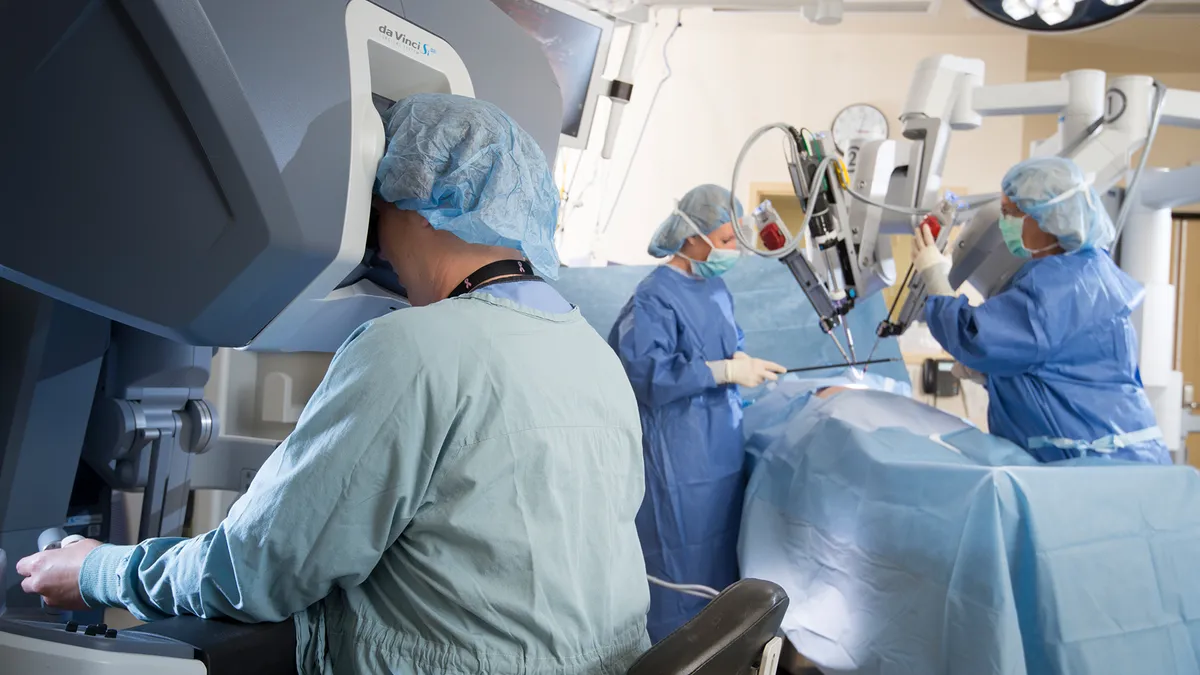Dive Brief:
- Intuitive Surgical, maker of the da Vinci robotic surgery system, posted a 20% jump in second-quarter revenue to $909 million, compared with a year ago. The company shipped 220 da Vinci systems in the quarter, up from 166 in the same quarter last year.
- Worldwide, da Vinci procedures increased about 18% in the quarter, driven by growth in U.S. general surgery and worldwide urologic procedures, the company said. The company reported second-quarter net income of $255 million, or $2.15 a share, which climbed from $223 million, or $1.94 a share, the year before.
- The company said it received FDA approval in recent months for three new products: the Vessel Sealer Extend, the da Vinci SP (single port) surgical system for use in certain urology procedures, and a third-generation stapling platform.
Dive Insight:
The robotic surgery market has long been dominated by Intuitive Surgical, which has more than 4,500 of its da Vinci machines in hospitals worldwide. Intuitive’s only competitor in the U.S. market, tiny TransEnterix, gained FDA approval for its Senhance system in October.
However, bigger medical device players including Medtronic and Verb Surgical — the Johnson & Johnson/Verily (formerly Google Life Sciences) startup — have surgical robots in development. Verb aims to have a surgical robot on the market by 2020.
The da Vinci systems are expensive, costing between $500,000 and $2.5 million to purchase. There are also costs for servicing, instruments and accessories. Some doctors and analysts believe new market entrants could gain a foothold if they can compete on price.
Most top U.S. hospitals for cancer treatment, urology, gynecology and gastroenterology have invested in the systems. Surgical robots are used for minimally invasive hernia repair, bariatric surgery, hysterectomies and prostate removal.
Robotic systems enable surgeons to operate through a few small incisions in the abdomen from a nearby computer console. The systems are designed to improve precision and control. The surgeon sits at the console while viewing a high-definition, 3D image of the patient’s anatomy. The surgeon’s hand movements at the console guide the surgical instruments attached to three or four robotic arms.










